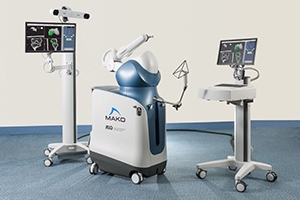Picture this: you're out for a run, feeling great, when suddenly your hip starts acting up. Ouch! That pain could be a sign of a labral tear. Let's break down what that means and how to deal with it.
What is the Hip Labrum?
The hip labrum is a ring of cartilage that lines the edge of the hip socket. It helps to stabilize the joint and prevent the femoral head from slipping out of place. When the labrum is damaged or torn, it can lead to pain, instability, and a range of other symptoms.
Causes of Hip Labrum Tears
Hip labrum tears can occur due to a variety of factors, including:
- Trauma: Sudden injuries, such as falls, sports accidents, or hip dislocations, can cause tears in the labrum.
- Degenerative changes: Over time, the labrum can wear down and tear due to age-related changes or repetitive stress.
- Femoroacetabular impingement (FAI) aka hip impingement: This condition occurs when the femoral head and the hip socket don't fit together properly, leading to increased pressure on the labrum. For more on hip impingement, click here.
Symptoms of Hip Labrum Tears
Common symptoms of a hip labrum tear include:
- Pain in the hip or groin, often worse with activity
- A clicking or popping sensation in the hip
- Hip instability or a feeling of the hip "giving out"
- Limited range of motion in the hip joint
- Catching or locking sensations in the hip area
Diagnosis of Hip Labrum Tears
To diagnose a hip labrum tear, your doctor will likely conduct a physical examination to assess your range of motion, strength, and tenderness. Imaging tests, such as X-rays or MRIs, may also be used to visualize the hip joint and identify any damage to the labrum.
Treatment Options for Hip Labrum Tears
There are both non-surgical and surgical treatment options to address hip labrum tears. However, the appropriate treatment will depend on the severity of the injury and your individual circumstances.
Non-Surgical Treatment:
- Rest and physical therapy: Resting the affected hip and undergoing physical therapy can help to reduce pain, improve range of motion, and strengthen the surrounding muscles.
- Corticosteroid injections: In some cases, corticosteroid injections may be used to reduce inflammation and pain. For more on cortisone injections, click here.
Surgical Treatment:
- Arthroscopic hip labrum repair: This minimally invasive procedure is often used to repair torn labra. During arthroscopy, a surgeon inserts small incisions around the hip and uses a camera and specialized instruments to repair the damaged tissue.
Traveling for Treatment at American Hip Institute
If you live outside the Chicago area and are seeking specialized care for a hip labrum tear, American Hip Institute offers exceptional treatment options. Their team of expert orthopedic surgeons is dedicated to providing the highest quality care using advanced techniques and technologies.
To make your travel experience as smooth as possible, American Hip Institute offers a travel patient concierge team. This team can assist you with travel arrangements, accommodations, transportation, and other logistical details.
While a hip labrum tear can be a painful and debilitating condition, with the right diagnosis and treatment, it is often possible to manage the symptoms and restore function to the hip joint. If you are experiencing symptoms of a hip labrum tear, it is important to consult with one of our orthopedic surgeons to discuss your options and determine the best course of action.




